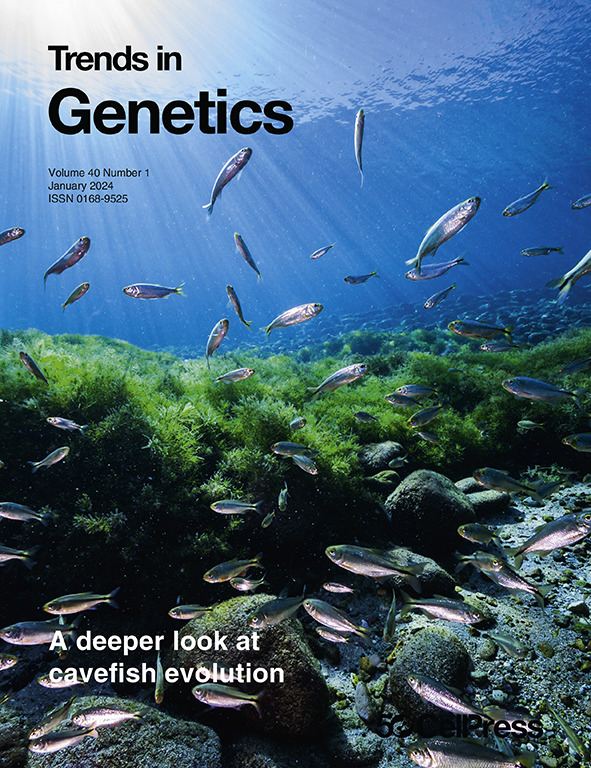评估古代基因组中的常染色体非整倍体
IF 13.6
2区 生物学
Q1 GENETICS & HEREDITY
引用次数: 0
摘要
利用遗传学方法,可以在古人类遗骸中检测到非整倍体,这是迄今为止唯一能可靠证明其在过去存在的方法。正如 Rohrlach 等人和 Anastasiadou 等人在最近的研究中所强调的那样,这第一步可以更深入地探索罕见疾病的历史,包括患病者的社会和历史背景。本文章由计算机程序翻译,如有差异,请以英文原文为准。
Assessing autosomal aneuploidy in ancient genomes
Using genetic methods, aneuploidies can be detected in ancient human remains, which is so far the only way to reliably prove their existence in the past. As highlighted in recent studies by Rohrlach et al. and by Anastasiadou et al., this initial step enables a deeper exploration of the history of rare diseases, encompassing the social and historical contexts of the afflicted individuals.
求助全文
通过发布文献求助,成功后即可免费获取论文全文。
去求助
来源期刊

Trends in Genetics
生物-遗传学
CiteScore
20.90
自引率
0.90%
发文量
160
审稿时长
6-12 weeks
期刊介绍:
Launched in 1985, Trends in Genetics swiftly established itself as a "must-read" for geneticists, offering concise, accessible articles covering a spectrum of topics from developmental biology to evolution. This reputation endures, making TiG a cherished resource in the genetic research community. While evolving with the field, the journal now embraces new areas like genomics, epigenetics, and computational genetics, alongside its continued coverage of traditional subjects such as transcriptional regulation, population genetics, and chromosome biology.
Despite expanding its scope, the core objective of TiG remains steadfast: to furnish researchers and students with high-quality, innovative reviews, commentaries, and discussions, fostering an appreciation for advances in genetic research. Each issue of TiG presents lively and up-to-date Reviews and Opinions, alongside shorter articles like Science & Society and Spotlight pieces. Invited from leading researchers, Reviews objectively chronicle recent developments, Opinions provide a forum for debate and hypothesis, and shorter articles explore the intersection of genetics with science and policy, as well as emerging ideas in the field. All articles undergo rigorous peer-review.
 求助内容:
求助内容: 应助结果提醒方式:
应助结果提醒方式:


